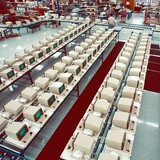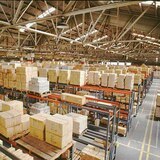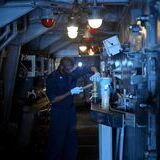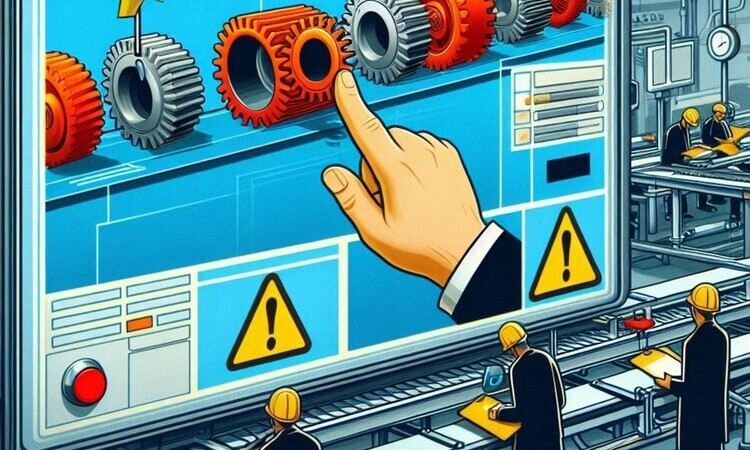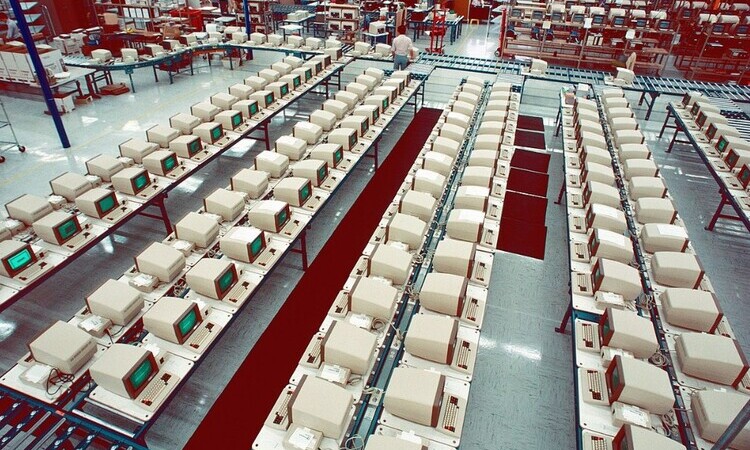Identifying the constraint - TOC
In this step of the Theory of Constraints, we will identify the constraint that limits the capacity of the process we would like to improve. First of all we need to understand the concepts explained below:
What are the different states of an operation or activity in a manufacturing process?
If we pay attention to any operation or activity performed by a person or a machine, we can find the following possible states:
- Working in the part.
- Making adjustments to produce the next reference (changeover).
- It's under maintenance operations.
- Stopped due to breakdown.
- Waiting for material arrival to start working, which is known as "starving". This means that the previous operation is still processing the parts which must arrive to the station and we have here a "waste" of time or non-productive time.
- Waiting that the next operation finishes with the part that is processing so that there is space to leave the part. This is known as "blocked" and involves also a "waste" of time that will not be productive.
It can be observed that of all the status mentioned above, the only one that adds value to the part, is the one related to when working in the part, so our efforts should be addressed to maximize this state.
How to identify the constraint or bottleneck by process observation?
Only by observing one operation in a process we will be able to determine if it’s a constraint or not. Generally speaking, it can be confirmed that if that operation is “starving” or “blocked” it won’t be the constraint of the process.
Operation is "starving"
If the manufacturing operation is “starving” means that it’s waiting for material arrival, which means that previous operations are having a greater cycle time than the one that we are currently observing. This means, that the constraint will be “upstream” in the process. Let’s see below an example.
Let’s imagine a process with four work stations without any buffer or stock between them (one-piece-flow) in which value is added along the stations from station 1 to 4. Cycle times are the ones shown below:
- Station 1: 30 seconds/part.
- Station 2: 22 seconds/part.
- Station 3: 18 seconds/part.
- Station 4: 22 seconds/part.
If we started observing operation number 3 (18 seconds/part) we would realice that most of the time the operation will be “starving”, waiting for parts from “upstream”, making it clear that the constraint is in operations 1 or 2. Afterwards, we would observe operation number 2 and we would see that it’s also “starving” so we could easily conclude that the bottleneck is in station 1.
Operation is "blocked"
If the operation which we are observing is “blocked”, it cannot put the material in the next station because some of the operations that go afterwards are still working, having a longer cycle time. Due to this reason, we can confirm that the bottleneck or constraint is located "downstream" in the process of the station that we are studying.
Let's put another example with the same layout showed before but with different cycle times in the stations:
- Station 1: 20 seconds/part.
- Station 2: 22 seconds/part.
- Station 3: 27 seconds/part.
- Station 4: 35 seconds/part.
If we start the observation from station 2 (22 secs/part), we will realize that after finishing its cylce time, the station will be "blocked", so we can conclude that the "bottleneck" is located "downstream" and we start observing station number 3 that will be also blocked wating that station 4 finishes. Taking into account this, we can confirm that the station 4 is the bottleneck in this process.
How to identify the constraint or bottleneck by observing inventory?
We can also identify where is the constraint or bottleneck by observing the inventory. Generally we can confirm that::
- If the inventory is almost empty, the constraint will very likely be located "upstream".
- If the inventory is almost full, the constraint will very likely be located "downstream".
- If the inventory is half full/empty, it's not possible to know accurately where is the bottleneck.
We can understand this better with below example. Let's imagine a process which consist of three stations with threes inveintories/stocks between them. It's assumed that the maximum number of parts in the inventory is six and minimum zero. Having said that we can observe the following:
- Inventory prior station 1: 6 parts
- Inventory between station 1 and 2: 4 parts
- Inventory between station 2 and 3: 1 part
Let's use the rule we just explained using arrows to identify the constraint:
- Inventory prior station 1 is full, so the constraint will be downstream. We draw an arrow in right direction.
- Inventory between station 1 and 2 is almost full, so the constraint will be downstream. We draw an arrow in right direction.
- Inventory between station 2 and 3 is almost empty, so the constraint will be upstream. We draw an arrow in left direction.
Paying attention to the arrows we can see that are pointing to station 2, that very probably will be the constraint of this system.
List of post published related to Theory of Constraints
Below you can access to all the post published related to the Theory of Constraints:
Theory of Constraints - TOC - Introduction
Identifying the constraint - TOC
Exploiting the Constraint - TOC


